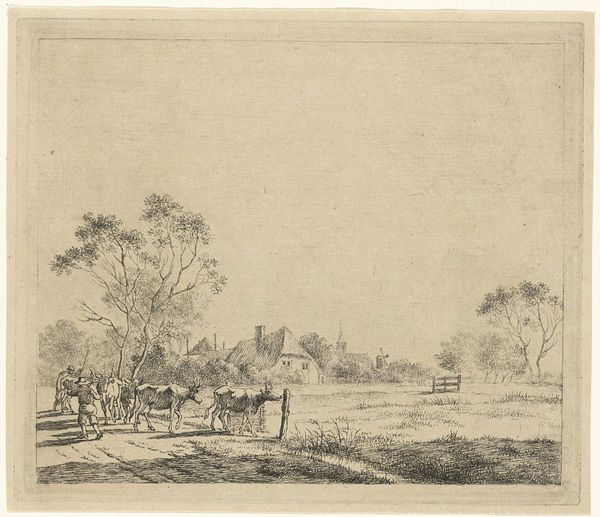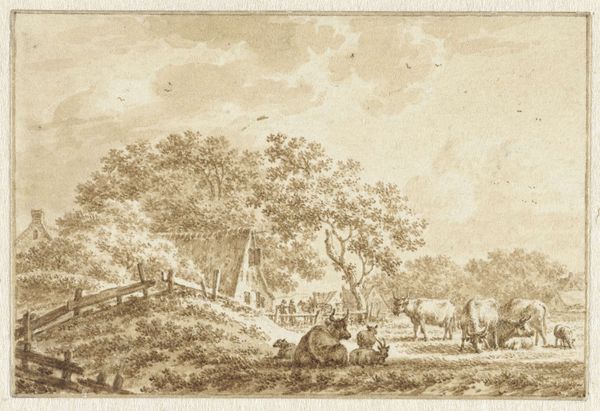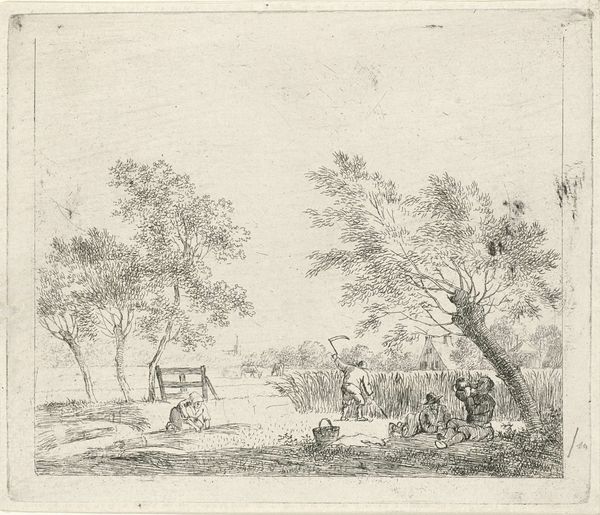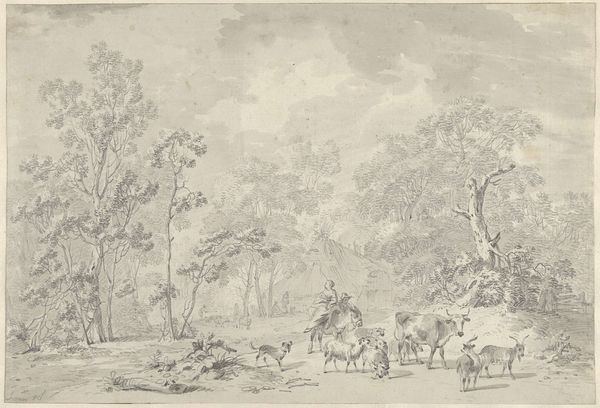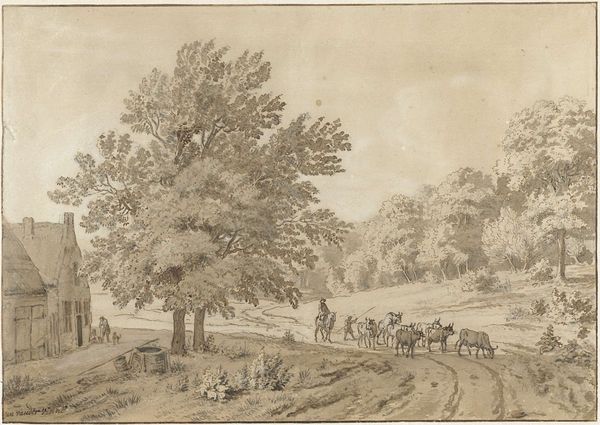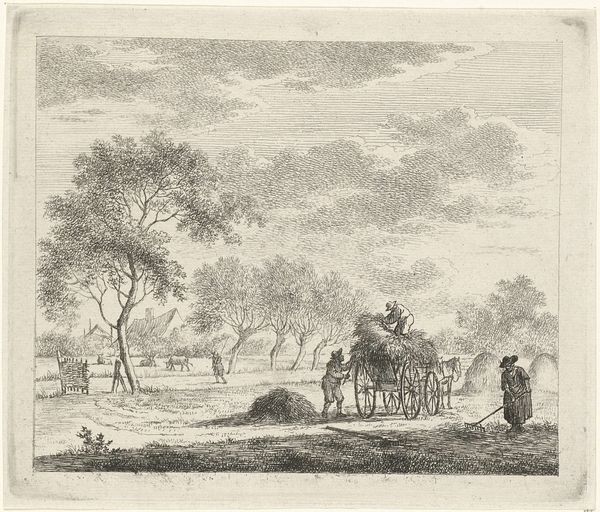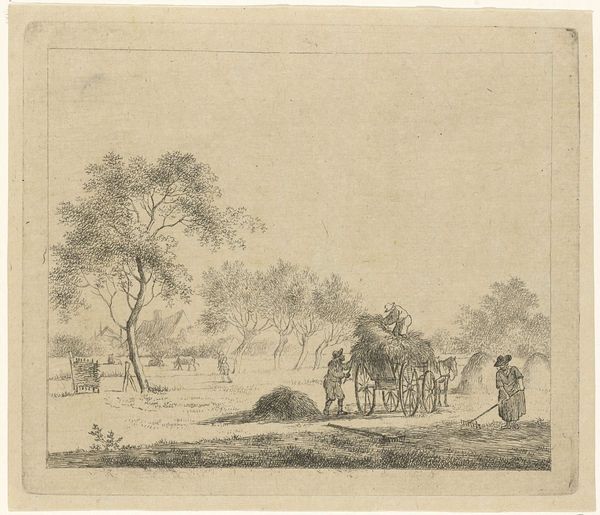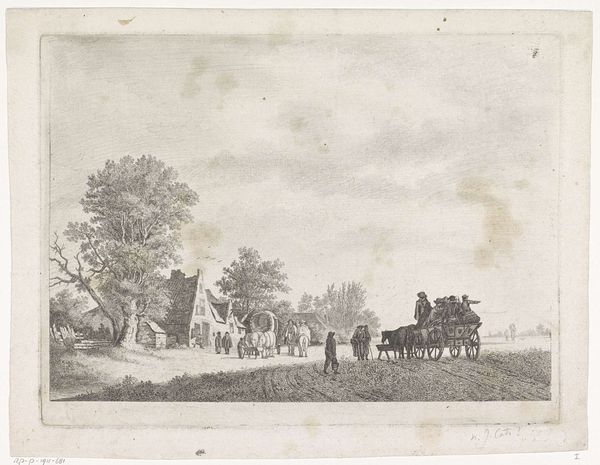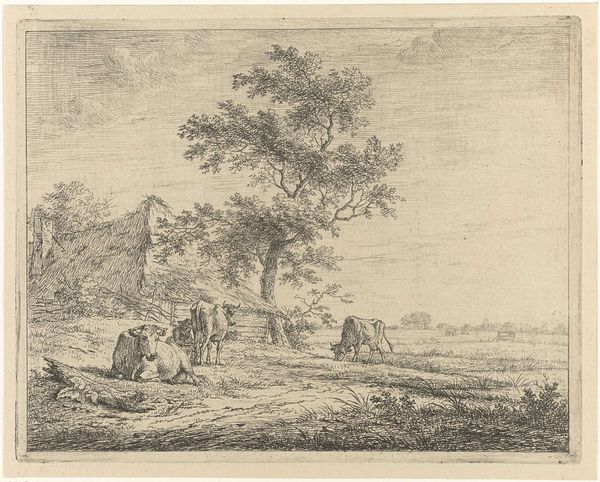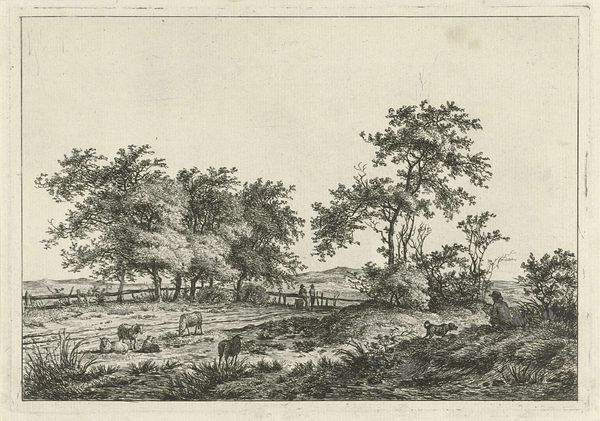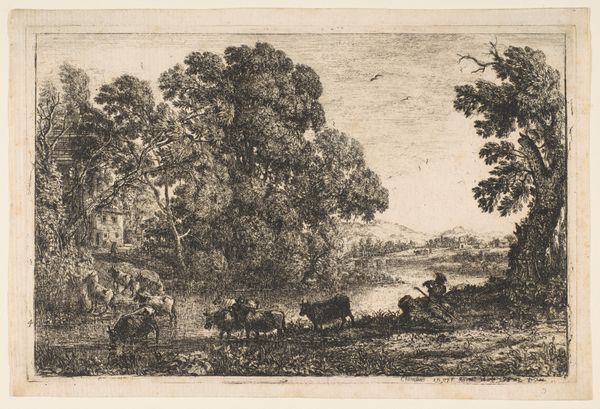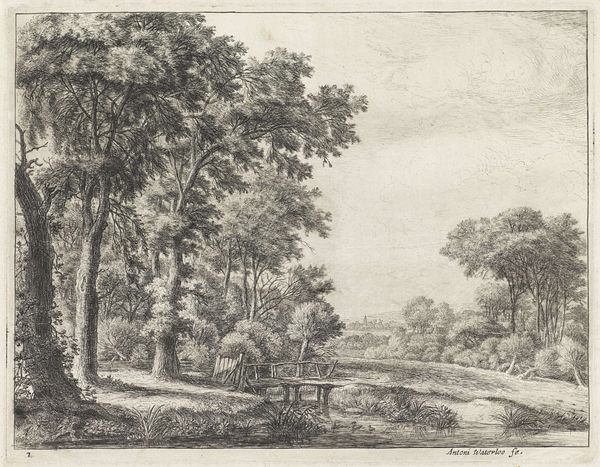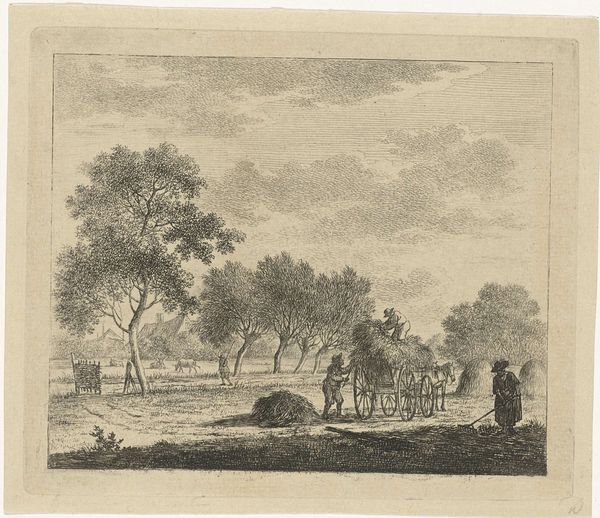
print, etching
#
neoclassicism
# print
#
etching
#
landscape
#
etching
#
genre-painting
Dimensions: height 143 mm, width 169 mm
Copyright: Rijks Museum: Open Domain
Curator: It has a tranquil, almost melancholic feel to it, doesn't it? It reminds me of quiet Sunday afternoons in the countryside. Editor: Precisely. Here we have "Landscape with Farm and Cows" created by Johannes Janson in 1783. As an etching, the image itself stems from readily available and circulating media that offered common and widely available aesthetic preferences and desires. Curator: Right, I’m particularly drawn to the subtle way the light filters through the clouds. Look how it catches on the backs of the cows, that delicate pattern. And how the texture of the grass and the leaves, how would he achieve such detail with etching alone? Editor: The etching process allows for precise lines, carefully controlled biting of the plate to create varying tones and textures. This allowed a democratization of image making: etching, being an easily reproducible medium, played an important role in both shaping and responding to the contemporary art market and consumer culture. The labour itself becomes visible! Curator: It does. I can almost feel the stillness of the air. It is an ordinary image but yet, there’s something almost idealized about this rustic scene. Do you get a sense of harmony, the connection with nature? Editor: Indeed. One can analyse its depiction through lenses that highlight shifting socioeconomic structures. The artist invites us to witness an ordinary yet aestheticized countryside, but it must be stressed, with which public and for whom? It could become a symbolic affirmation of national identity and collective ownership and also reflect how societal trends, consumption patterns and aspirations towards certain lifestyles could transform ordinary etchings. Curator: That’s insightful. Now when you said about ownership, that reminds me – I recently discovered that Janson himself owned a modest farm later in life... I wonder if that lived experience perhaps adds a personal layer to this composition? Editor: Very astute! And perhaps a clever artist found his niche through such medium to attract commissions in the process. The cows become not mere figures in a landscape, but an indication of capital, labour, food economies... Curator: Perhaps the cows represent wealth and labour as well! What did those images mean and mean to evoke for their original purchasers? Editor: In short, we looked at etching in its historical material reality in the eighteenth century. Curator: Exactly. It is this balance between detail and impression that truly draws me in. And there it goes! Another fresh vision to consider...
Comments
No comments
Be the first to comment and join the conversation on the ultimate creative platform.
